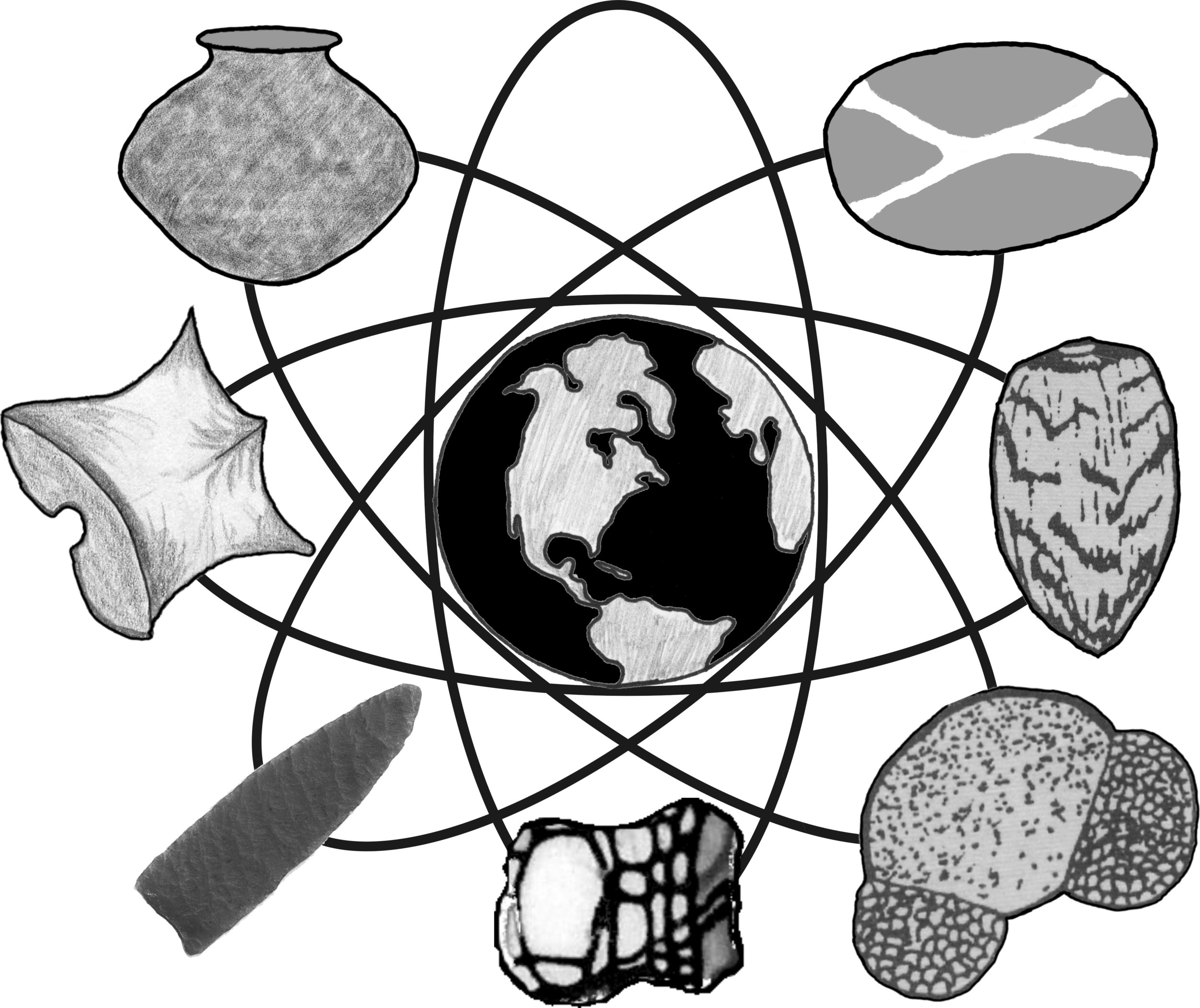Starch
Starches primarily serve as food for bacteria and other soil micro-organisms, but occasionally persist in the archaeological record. Starches recovered from archaeological sites provide a particularly important record of roots/tubers that were processed because these foods do not typically leave seeds or pollen behind. If roots/tubers are collected when the plants are in flower, the flowers may transport pollen to the processing area, allowing portions of the pollen record to represent the collection and processing of roots/tubers. However, if roots/tubers are not collected when the plants are in flower, there is no transport mechanism and tuber processing is not reflected in the pollen record. Many starches survive our pollen extraction process, meaning that we can identify them when we see them in pollen samples.
As a general rule, starches from roots/tubers have eccentric hila (that means their hilum, which often appears as a dark spot under the microscope) is off-center. Seeds, on the other hand, usually produce starches with centric hila. A cross-polar illuminator (or crossed-Nichols) are necessary to examine starches well enough to identify them. Some starches have a rather generic form, while others are specific to either genus or species. Many plants produce several different types of starches in a single organ, meaning that one must learn to identify populations of starches, rather than relying on single starches. At PaleoResearch Institute, we have documented starches in human tooth calculus, groundstone washes, ceramic washes, washes of Poverty Point objects, floor samples, other sediment samples, and in nearly every type of provenience that we have examined for evidence of food processing.
In general, starches do not seem to survive the phytolith extraction process as well as they survive the pollen extraction process, although we do see them in some phytolith samples. Starches should be "food for bacteria and other soil micro-organisms", but as with all things in nature, it is an imperfect system. Some of the starches simply survive. Starches provide a particularly good record of roots/tubers that were processed because these foods do not leave seeds, pollen, or phytoliths. When roots/tubers are collected when the plants are in flower, the flowers transport pollen to the processing area, which allows portions of the pollen record to represent collection and processing roots/tubers. However, when roots/tubers are not collected when the plants are in flower, there is no transport mechanism. Many starches survive our pollen extraction process, meaning that we can identify them when we see them in pollen samples. As a general rule, starches from" roots/tubers have eccentric hila (that means their hilum, which often appears as a dark spot under the microscope) is off-center. Seeds, on the other hand, usually produce starches with centric hila. A cross-polar illuminator (or crossed nichols) are necessary to examine starches well enough to identify them. Some starches have a rather generic form, while others are specific to either genus or species. Many plants produce several different types of starches in a single organ, meaning that one must learn to identify populations of starches, rather than relying on single starches. We have noted starches in human tooth calculus, groundstone washes, ceramic washes, washes of Poverty Point Objects, floor samples, other sediment samples, and in nearly every type of provenience that we have examined for evidence of food processing.

